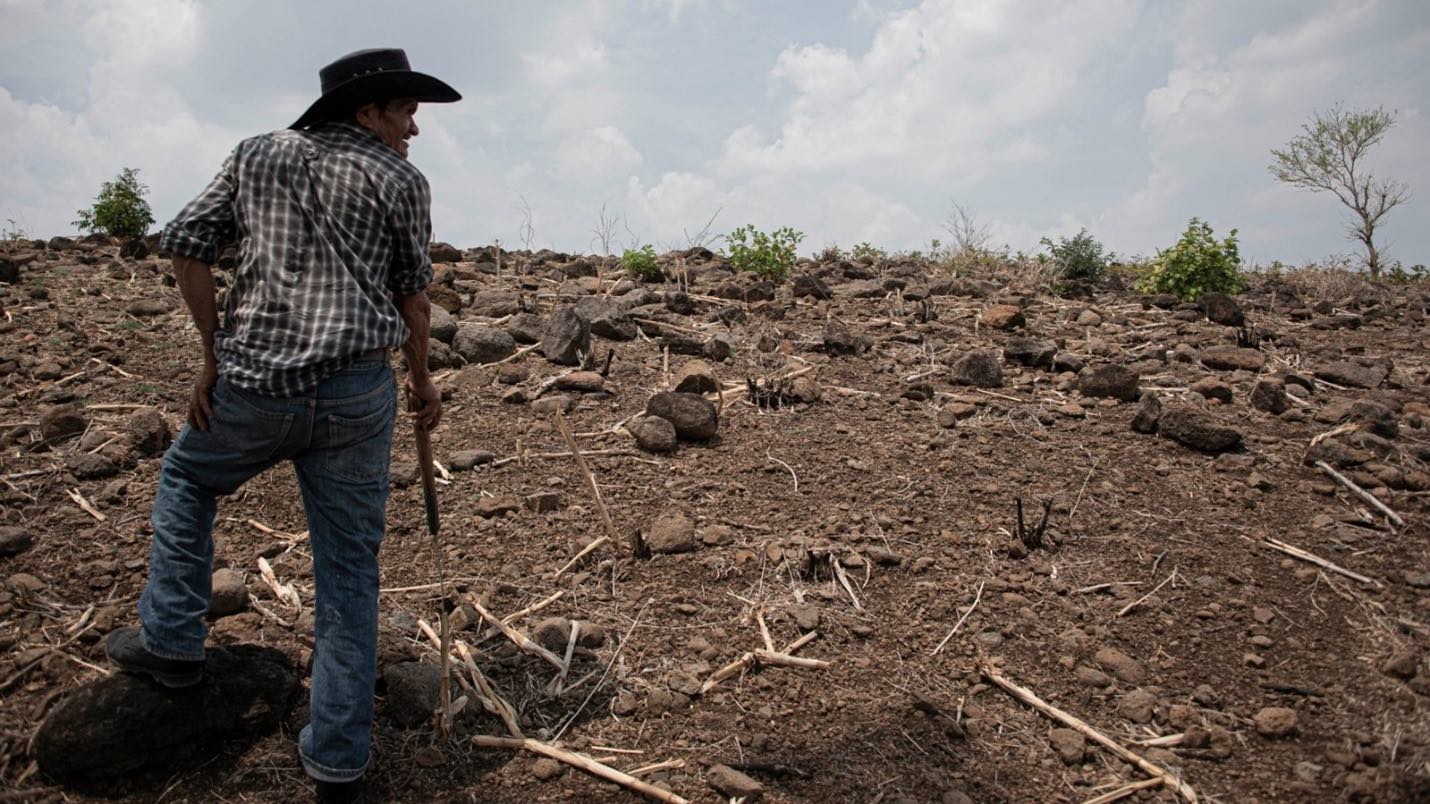The following piece by IFPRI’s Maximo Torerois an excerpt of a story that was originally posted on the Devex Global Views blog in honor of World Food Day (October 16).
On World Food Day, it’s time to remind ourselves that economic growth is only sustainable if all countries have food security. Without a country-owned and country-driven food security strategy, there will be obstacles and additional costs to global, regional and country level economic growth.
Countries with very high levels of poverty and chronic malnutrition face limitations in human capital development, which is required to achieve sustainable growth. High levels of poverty, inequality, and chronic malnutrition force governments to invest significant resources in the short-term through social safety net programs and conditional cash transfers. High rates of malnutrition can lead to a loss in gross domestic product (DGP) of as much as 4 to 5 percent, according to the UN Food and Agriculture Organization.
Food security not only carries significant benefits for human health, but also serves as the basis to achieve sustained economic growth. For this reason, it is essential that we understand that a food security strategy needs to be seen as more than a single sector issue; it requires a combination of coordinated actions in various sectors. We are talking about actions in finance, agriculture, health and nutrition, infrastructure, and other sectors.
Likewise, economic growth alone will not solve the problem of chronic malnutrition and stunting. In one of the latest publications of The Lancet, a leading scientific journal in the field of global health and nutrition, we learn that a 10 percent increase in economic growth reduces chronic malnutrition by only 6 percent. This asymmetry illustrates that economic growth by itself won’t resolve the problem of chronic malnutrition, which is a key variable in any food security strategy.
Second, we know that economic growth can have negative effects, too. For example, a 10 percent increase in economic growth is correlated with a 7 percent increase in obesity among women. This shows the critical nature of targeting tax and fiscal instruments to optimize the consumption of nutritious foods and minimize the use of foods that cause obesity, another common form of malnutrition.
These key findings are the result of many years of research in different countries. They show us that if we want a strategy based on food security, it is essential to change outdated mindsets aimed at economic growth that do not include food and nutrition security targets.
Achieving food security and reducing chronic malnutrition requires additional multi-sectoral policies aimed at reducing inequalities and targeting vulnerable populations. For example, Latin American countries have the greatest income gaps of any region in the world. But there are some success stories from the region as well. In Brazil, stunting fell from 37.1 percent to just 7.1 percent over the last 33 years. Much of this reduction in stunting occurred between 1996 and 2007, when the gaps between poor and wealthy families with children under 5 were reduced in terms of purchasing power as well as access to education, health care, water and sanitation services, and reproductive health care.
Without stable and long-lasting food security, there will be a continued negative effect on human capital and this will raise government fiscal costs, with negative consequences on government public spending. This also will lead to stagnated economic growth in the long term. Thus, food security is central to both short- and long-term economic growth and it needs to be a central part in a larger cross-sectoral strategy at the national, regional and global levels. A recent report from the International Food Policy Research Institute (IFPRI) shows which countries are facing the highest rates of hunger and malnutrition, providing a roadmap for governments and policymakers seeking to address the issue.
Finally, it is important to understand that investments geared toward achieving food and nutrition security must be integrated into the larger public policy debate, particularly in countries facing budgetary restrictions and obstacles to development on multiple fronts. Having clear targets and proper monitoring and evaluation strategies for measuring progress in the fight against hunger and malnutrition is a necessary start. Beyond this, linking these targets with other cross-sectoral programs where the efficiency and effectiveness of public expenditures are held accountable will play a key role in achieving long-term, sustainable economic growth even under tight budget constraints.
Maximo Torero is the Division Director of the Markets, Trade, and Institutions Division at the International Food Policy Research Institute. His experience encompasses Latin America, Sub-Saharan Africa, and Asia.
The following piece by IFPRI’s Maximo Torerois an excerpt of a story that was originally posted on the Devex Global Views blog in honor of World Food Day (October 16).
On World Food Day, it’s time to remind ourselves that economic growth is only sustainable if all countries have food security. Without a country-owned and country-driven food security strategy, there will be obstacles and additional costs to global, regional and country level economic growth.
Countries with very high levels of poverty and chronic malnutrition face limitations in human capital development, which is required to achieve sustainable growth. High levels of poverty, inequality, and chronic malnutrition force governments to invest significant resources in the short-term through social safety net programs and conditional cash transfers. High rates of malnutrition can lead to a loss in gross domestic product (DGP) of as much as 4 to 5 percent, according to the UN Food and Agriculture Organization.
Food security not only carries significant benefits for human health, but also serves as the basis to achieve sustained economic growth. For this reason, it is essential that we understand that a food security strategy needs to be seen as more than a single sector issue; it requires a combination of coordinated actions in various sectors. We are talking about actions in finance, agriculture, health and nutrition, infrastructure, and other sectors.
Likewise, economic growth alone will not solve the problem of chronic malnutrition and stunting. In one of the latest publications of The Lancet, a leading scientific journal in the field of global health and nutrition, we learn that a 10 percent increase in economic growth reduces chronic malnutrition by only 6 percent. This asymmetry illustrates that economic growth by itself won’t resolve the problem of chronic malnutrition, which is a key variable in any food security strategy.
Second, we know that economic growth can have negative effects, too. For example, a 10 percent increase in economic growth is correlated with a 7 percent increase in obesity among women. This shows the critical nature of targeting tax and fiscal instruments to optimize the consumption of nutritious foods and minimize the use of foods that cause obesity, another common form of malnutrition.
These key findings are the result of many years of research in different countries. They show us that if we want a strategy based on food security, it is essential to change outdated mindsets aimed at economic growth that do not include food and nutrition security targets.
Achieving food security and reducing chronic malnutrition requires additional multi-sectoral policies aimed at reducing inequalities and targeting vulnerable populations. For example, Latin American countries have the greatest income gaps of any region in the world. But there are some success stories from the region as well. In Brazil, stunting fell from 37.1 percent to just 7.1 percent over the last 33 years. Much of this reduction in stunting occurred between 1996 and 2007, when the gaps between poor and wealthy families with children under 5 were reduced in terms of purchasing power as well as access to education, health care, water and sanitation services, and reproductive health care.
Without stable and long-lasting food security, there will be a continued negative effect on human capital and this will raise government fiscal costs, with negative consequences on government public spending. This also will lead to stagnated economic growth in the long term. Thus, food security is central to both short- and long-term economic growth and it needs to be a central part in a larger cross-sectoral strategy at the national, regional and global levels. A recent report from the International Food Policy Research Institute (IFPRI) shows which countries are facing the highest rates of hunger and malnutrition, providing a roadmap for governments and policymakers seeking to address the issue.
Finally, it is important to understand that investments geared toward achieving food and nutrition security must be integrated into the larger public policy debate, particularly in countries facing budgetary restrictions and obstacles to development on multiple fronts. Having clear targets and proper monitoring and evaluation strategies for measuring progress in the fight against hunger and malnutrition is a necessary start. Beyond this, linking these targets with other cross-sectoral programs where the efficiency and effectiveness of public expenditures are held accountable will play a key role in achieving long-term, sustainable economic growth even under tight budget constraints.
Maximo Torero is the Division Director of the Markets, Trade, and Institutions Division at the International Food Policy Research Institute. His experience encompasses Latin America, Sub-Saharan Africa, and Asia.







